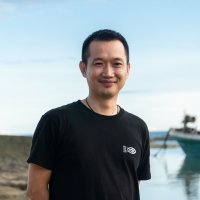WEBCAST: Styrofoam Beach Snow: A Global Ocean Plastic Debris Challenge
Known for its low production cost, light weight, and thermal insulation properties, Styrofoam is ideal for packaging carryout and frozen food and for use in the fishing industry as buoys and fish farming traps. Around the world, bans are emerging to reduce ocean pollution from sources like food packaging polystyrene, but polystyrene pollution that originates directly from activities taking place on or near the ocean remains largely overlooked.
As part of the China Environment Forum’s exploration of innovation and partnerships to address ocean plastic leakage, the speakers at dived into the challenges of safely replacing or disposing of styrofoam. Annkathrin Sharp and Georgina Magin (Fauna and Flora International), drawing on their recent report on ocean polystyrene pollution, launched the session with an overview of the drivers of the coastal “snow” in the UK and EU and highlighted some recommendations. Han Han and Jinsong Li (China Blue), who support burgeoning sustainable aquaculture farming in China, discussed the challenge of polystyrene pollution in Hainan and along the country’s southeast coast. Michikazu Kojima (IDE and ERIA) explored the progress in Japan to better sort styrofoam for safe disposal or recycling and the lessons this system might offer for countries tackling this pervasive global issue.
This meeting is part of a Problematic Plastics series launched by the Wilson Center’s China Environment Forum and the Institute of Developing Economies. The meeting series is supported by the Japan Foundation’s Center for Global Partnership and is part of our Turning the Tide to Slow Plastic Waste in Southeast Asia project.
Pana-Chemical EPS recycling video featured in Michikazu Kojima's presentation
Annakathrin Sharp
“Pontoons often contain foamed polystyrene and while they're increasingly covered by a more resilient material such as concrete or hard plastic, this does not guarantee protection from damage in all conditions. This is a particular problem in stormy weather, which is demonstrated in this photo, which is an example of what happened in Holyhead Marina in Wales a couple of years ago, when a severe storm broke up the pontoon and led to extensive polystyrene pollution that was extremely difficult to clean up. And this has also happened in recent years in New Zealand and California and other places, and as weather events that are as severe as this become ever more common with climate change, it's an increasing concern about port and marina infrastructure and how we can make sure it doesn't lead to this kind of pollution.”
“It's really important to just pause for a minute here and recognize that as an organization, FFI is generally wary about promoting alternatives where they may pose further potentially unexpected or unseen environmental costs themselves – whether in their manufacturer or in their disposal and where an alternative might be plastic based too, it could seem like we're just replacing one problem with another. However the logic behind proposing more durable alternatives to foamed polystyrene is to reduce the amount of pollution entering the marine environment overall, particularly where foam polystyrene can absorb more toxins than other kinds of plastic, at least until a more preferable long-term solution can be identified.”
“To underpin these efforts, there needs to be a general increase in awareness and training provided to users of these products regarding the impacts of perpetuating firm polystyrene pollution, measures that they could be taking and the regulatory obligations that they already have, such as under Marpol Annex V, which is which is a global law outlawing the discarding of any non-organic waste from vessels at sea.”
Georgina Magin
“In 2009, we started working on marine plastic pollution, seeing it as an increasing threat to the marine biodiversity we are working to conserve, and that biodiversity angle is very much a key underpinning principle of our work on plastics and how we approach it. As well as working on kind of broad plastic pollution issues we have a particularly strong focus on microplastics, which are particularly a key threat to biodiversity. So we've worked on microbeads, we work on plastic pellets or needles and we're in the earlier stages of some work on microplastic fibers. Just to mention the approach we take to the plastics issue, we appreciate that plastic is a really useful material and we don't seek to demonize it—what we're looking for is sensible plastic use in a circular economy... So moving away from the single use and the wasteful culture that currently surrounds a lot of plastic use.”
“We base our positions and interventions on evidence and sound science. We work collaboratively with other NGOs but also very much with industry or with governments and we're focused on finding realistic practical solutions—so taking a constructive approach to solving problems.”
“I mean we've found from our experience, both on the microbeads and as Annie just mentioned, on plastic pellets at the moment, that bringing together coalitions of either just NGOs or even wider involving industry organizations or associations can be a really really productive way of working and it obviously draws on the kind of strengths and different approaches. Often even amongst the NGO community, different organizations will have very different approaches and areas of expertise and bringing those together in coalitions is, I think, a really really effective way of working.”
Han Han
“The basic challenges for these people to achieve sustainable development is how to become better organized to make the production more efficient. And when we're talking about efficiency, I think it's not just about the economic efficiency. It's also including taking into account the social and environmental efficiency. So that's our part of our work, to figure out [and identify] who are the champions or leaders that could be working with us together to make the best use of the advanced technologies, like information technologies, internet based technologies and and other new forms of management tools, so these young generations—we have seen that they adopted, like the wechat, the e-commerce platforms—try to gradually change the traditional practices fishing or fish farming practices and also build up the new relationship with their community members and the business partners outside communities.”
“[Banning] the single-use plastics might be a little bit over ambitious. Maybe if we just focus on one particular type of material or maybe in the one particular scenario, you know, what kind of use of those material by which group of people that might be more tangible. But it's better than not setting up an ambitious goal I think, because you know, it's like you have to set a bar very high… you want to achieve the 90 out of 100, then you probably can reach 75.”
Li Jinsong
"Compared to the agricultural space, progress in the fishing industry is not as obvious. The government has pushed recycling and reuse of fishing devices to enhance the responsibility of producers and users and to reduce ghost-fishing nets, but these programs have not become mandatory yet."
"Hainan does not have the same large-scale as other fishing areas. Logistics and transportation are expensive so it is difficult to form a commercial recycling model [for marine plastics], so we need government intervention and public-sector intervention."
"Through MARPOL, we have a good management system for [trash produced by] commercial vessels, but fishing boats are smaller with limited space and their production area is spread out so there are a lot of challenges in managing the trash they create"
Michikazu Kojima
"Styrofoam can be reduced to one-fiftieth of its original volume using machines that compress it in fish markets, like Tsukiji Fish Market, all over Japan"
"Containers comprise more than half of the EPS used in Japan each year. From the household level, major EPS Styrofoam streams are PSP trays and fish boxes from fish markets."
"The majority of the Styrofoam collection volume in Japan is coming from voluntary collection programs organized by shops and recyclers where consumers wash their used PSP trays and bring them when they go shopping."
"We don’t have initiatives to prohibit the use of Styrofoam [in Japan] so far. [Local governments, cities, and supermarkets] have already invested in recycling facilities, so we will continue to use styrofoam in Japan somehow"
Speakers





Moderator

Hosted By

China Environment Forum
China’s global footprint isn’t just an economic one, it’s an environmental one. From BRI investments in Africa and Asia to its growing presence in Latin America, understanding China’s motivations, who stands to gain - and who stands to lose - is critical to informing smart US foreign policy. Read more


Environmental Change and Security Program
The Environmental Change and Security Program (ECSP) explores the connections between environmental change, health, and population dynamics and their links to conflict, human insecurity, and foreign policy. Read more
